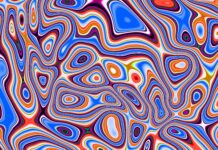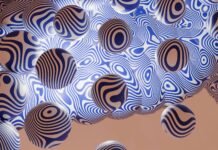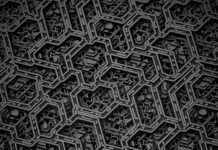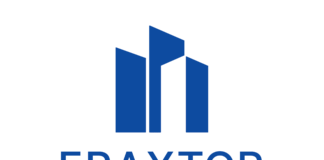AI in the fashion design school is no longer a futuristic concept—it’s an evolving reality that’s reshaping how students learn, create, and innovate. From smart design tools to personalized learning systems, AI in the fashion design school empowers aspiring designers to master techniques faster, explore trends deeper, and bring unique visions to life. As technology advances, AI in the fashion design school is proving to be a game-changer in curriculum design, career readiness, and creative exploration. If you’re part of the fashion education world, understanding these changes can give you a significant edge in both teaching and learning.
1. AI-Powered Design Assistance
AI tools are revolutionizing the way students create fashion designs. By analyzing patterns, colors, fabrics, and even market trends, these tools offer real-time suggestions to enhance creativity. Instead of starting from scratch, students can use AI-powered platforms like CLO 3D or Adobe Firefly to visualize their designs instantly, saving time and improving precision. This technology doesn’t replace creativity—it amplifies it, allowing students to push boundaries while still maintaining their personal style.
2. Personalized Learning Paths
One of the most transformative aspects of AI in fashion education is its ability to personalize learning. Through machine learning algorithms, schools can assess each student’s strengths, weaknesses, and learning preferences. This ensures that every learner receives targeted resources, tutorials, and assignments that fit their skill level. For example, if a student struggles with draping techniques, AI platforms can recommend step-by-step videos and interactive exercises to master the skill quickly.
3. Virtual Fashion Studios
AI-driven virtual fashion studios allow students to design, fit, and adjust garments without physical materials. These platforms use realistic 3D modeling to simulate fabrics and movements, providing an immersive design experience. Not only does this save costs on materials, but it also promotes sustainable practices—students can experiment endlessly without wasting fabric or resources.
4. Trend Prediction and Forecasting
Fashion design students no longer have to guess which styles will dominate next season. AI systems can analyze millions of data points from social media, runway shows, and retail performance to forecast trends accurately. This empowers students to create collections that align with future consumer demand, making their work more market-relevant and increasing their chances of commercial success.
5. Automated Fabric Analysis
Choosing the right fabric is crucial in fashion design. AI technology now allows instant fabric recognition and performance analysis. Students can upload a photo of a textile, and the AI can determine its composition, durability, and suitability for certain garments. This capability helps designers make informed decisions, leading to better quality creations.
6. Enhanced Collaboration and Feedback
AI tools enable seamless collaboration between students, teachers, and industry mentors. Platforms can analyze designs and provide constructive feedback in real time, suggesting technical improvements or aesthetic adjustments. This reduces the feedback loop and allows students to iterate faster, which is crucial in meeting tight fashion deadlines.
7. Sustainability Education Through AI
AI is a powerful ally in teaching sustainable fashion practices. By calculating the environmental impact of materials, production methods, and waste, AI helps students make eco-conscious design choices. Fashion design schools integrating these tools ensure that graduates enter the industry with a sustainability-first mindset, which is increasingly important in today’s fashion world.
8. AI in Fashion History and Cultural Studies
AI can also act as a fashion historian, scanning archives, old runway footage, and museum collections to give students deeper insights into cultural influences and design evolution. This makes it easier to study past trends, understand their societal contexts, and adapt historical inspirations into modern fashion.
9. Intelligent Career Guidance
For graduating students, AI offers career planning tools that analyze market needs, job openings, and individual skill sets. These platforms can suggest specialized areas of study, internships, or even entrepreneurship paths that align with a student’s goals. In competitive industries like fashion, this tailored guidance can be a major advantage.
10. Preparing Students for Industry 4.0
The fashion industry is embracing automation, robotics, and AI across production and retail. Fashion design schools using AI tools prepare students for Industry 4.0 by teaching them how to work with these technologies. This ensures that graduates not only have design skills but also the technical know-how to thrive in a digitally transformed fashion landscape.
Conclusion
The integration of AI in the fashion design school environment is not just a passing trend—it represents a structural and philosophical transformation of how future designers are trained, how creativity is nurtured, and how innovation is executed. For decades, the fashion education model relied heavily on manual processes, mentorship-based skill transfer, and traditional design principles. While these remain valuable, AI has introduced an entirely new toolkit—one that is faster, more precise, data-driven, and globally connected.
Students in a fashion design school equipped with AI capabilities are no longer bound by geographical limitations, lack of resources, or lengthy manual iterations. Instead, they can instantly generate patterns, simulate fabrics, predict trends, and personalize learning experiences to their own style development. This means a student in their first semester can experiment with advanced techniques that previously took years to master. AI does not diminish creativity—it enhances it by giving designers the time and tools to focus on conceptual depth while technology handles repetitive tasks.
Moreover, AI in the fashion design school context empowers inclusivity and sustainability. Designers can test garment structures in virtual environments, drastically reducing fabric waste, which directly contributes to eco-friendly practices—a priority in the modern fashion world. They can also explore designs for diverse body types, cultural aesthetics, and adaptive clothing needs, broadening the scope of their market relevance. This is particularly transformative for aspiring designers aiming to make a mark in global fashion.
From a career perspective, graduates who are fluent in AI-powered tools gain a significant competitive edge. The industry is hungry for talent that understands both artistry and technology—a combination that is now becoming essential rather than optional. Employers are increasingly seeking professionals who can blend trend forecasting algorithms with creative flair, manage AI-integrated production pipelines, and communicate design ideas across digital platforms with visual precision.
Perhaps the most exciting aspect is that AI in fashion design schools is still in its early stages. We are only scratching the surface of what’s possible. In the coming years, we can expect more advanced AI features like real-time consumer feedback loops integrated into classroom projects, hyper-personalized learning dashboards for each student, and seamless collaboration between human designers and AI co-creators. This evolution promises to make the next generation of fashion professionals more innovative, adaptable, and globally relevant than ever before.
Ultimately, the shift toward AI in fashion design school programs is about empowerment—empowering students to think bigger, design smarter, and act faster. It’s about equipping them not just with the skills for today, but with the mindset and tools for a future where technology and creativity walk hand in hand. Those who embrace this transformation early will not just keep up with the fashion industry—they will lead it.














